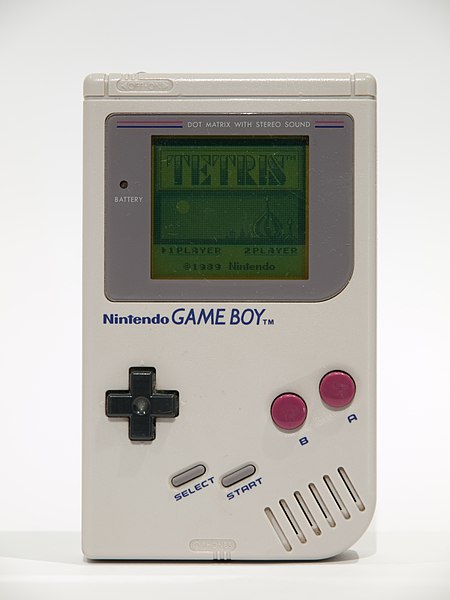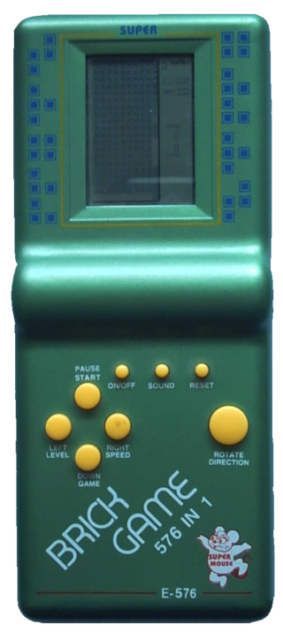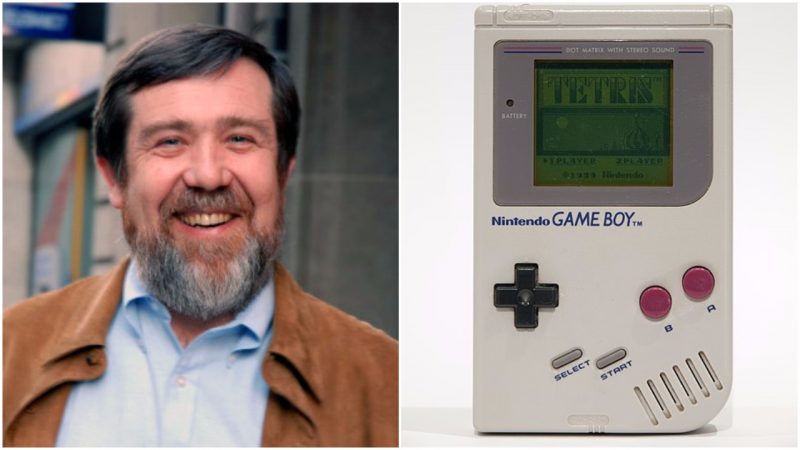Lacking a narrative, characters, game scenery, and any game art for that matter, Tetris is the simplest yet most addictive game. It was played all over the world in the late 1980s and early 1990s. And as a matter of fact, it still is.
It consists of polyominoes in different shapes but all containing four segments, for which the creator of the game gave it the prefix tetra, which is the Greek number for four. Tetris’ popularity seems perpetual. It has been played on any device imaginable, from Nintendo Game Boy to computers, from the game device created especially for Tetris to the contemporary mobile devices many of us have.
In the game, you have to create lines by manipulating the polyominoes in order for them to disappear. It was designed in 1984 by the Russian computer engineer Alexey Patjinov, who at the time was working as an artificial intelligence researcher at the Soviet Academy of Sciences at Moscow’s Computer Center. Creating a game at that time wasn’t his goal, but he created the programme so that he could test the capabilities of new hardware on the Electronika 60 computer.

The display on it was text-based, meaning that the tetrominoes were in the form of letter characters. They started to fill up the screen quickly, so Pajitnov decided to delete the completed lines. From there on, his testing game started sounding more and more like the Tetris we know. For the original version, Pajitnov would later tell The Guardian, “There was no scoring, no levels. But I started playing, and I couldn’t stop.” He gave the game’s code to several friends, among whom was Vadim Gerasimov, who ported it to the IBM PC.
This simple game got everybody. In less than two years, it spread beyond the Soviet Union and throughout the West, where versions were quickly created for Commodore 64 and Apple II. At the height of the Cold War, industries from all over saw money in it. And for such a simple game, the story gets a whole lot more complicated.

It all started when the British company Andromeda discovered Tetris. Although they didn’t own the rights to the game, they somehow sold them to Spectrum HoloByte, which produced a commercialized version of Tetris. This went on sale to the British public in 1987, and the money machine began. The game was such a profitable success that they decided to re-sell the rights to the game to somebody else. And while companies were getting rich by re-selling a basically nonexistent license, Pajitnov and the USSR didn’t earn a penny.

At the time, Pajitnov couldn’t patent his invention because he created the game while working for the Soviet Academy of Sciences, so he ceded his rights to the government for 10 years. The Soviets founded Elorg (Elektronorgtechnica) in 1988, an organization that marketed and licensed Tetris. The next year Nintendo obtained a legitimate license and bundled Tetris with its new portable Game Boy. And Pajitnov still earned nothing from his invention until the mid-1990s.
In 1996, 12 years after he created the game, Pajitnov co-founded the Tetris Company. He obtained the worldwide rights for the game and started getting what belonged to him–a lot of money. That same year he became part of Microsoft, where he worked until 2005. Then he began collaborating with WildSnake Software on releasing a new line of puzzle games.

His partner and co-founder of the Tetris Company, the games publisher Henk Rogers, commented that “Alexey Pajitnov is perhaps the most famous game designer in the world, yet he’s always been good-natured and philosophical about being denied the profits from his game.”
Related story from us: Nintendo was founded in 1889, nearly a century before the NES
The Tetris Company is still operating, and it protects its brand with legal actions. So, when Apple pulled a game named Tris from the App Store in 2009, they got a complaint from the Tetris Company. Oh, and it was Pajitnov who named the game after the Greek number tetra, and his favorite sport–tennis.
